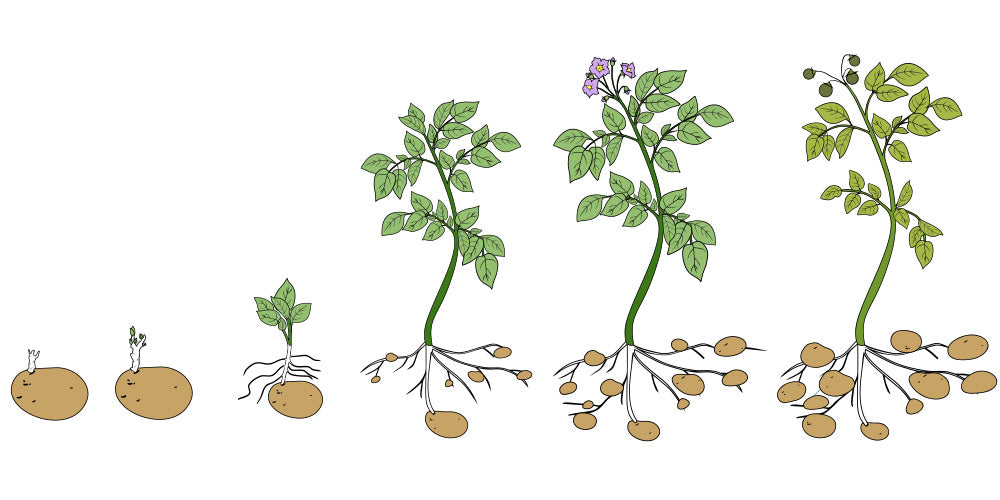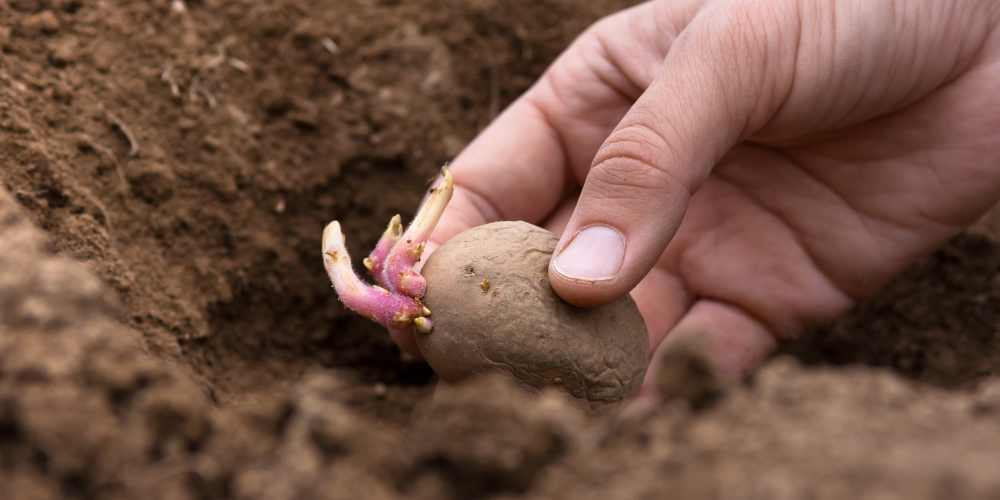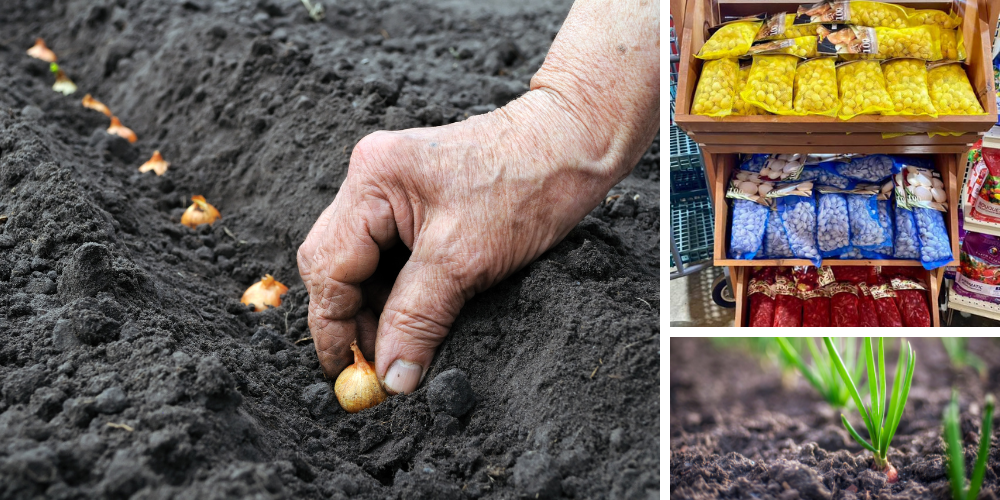Potatoes might seem ordinary, but this simple crop gave rise to modern industrial agriculture and helped shape the Western world! It's no wonder, then, that we can find a trove of potato planting lore spanning generations. In this blog, we're digging up some secrets of when, how, and why to plant this hearty crop this spring, just in time to enjoy a tasty harvest in the Quad Cities.

Potato Planting Lore
If you look back into humanity's rich planting past, you'll find tales of potato planting practices steeped in generations of tradition and folklore. In Bettendorf and the wider Quad Cities area, where agriculture still thrives amongst a rich history, these ancient methods still influence gardeners today! From the timing of planting to the rituals observed, let's unravel the historical context behind perfect potato cultivation, and remember to check out your local museums for even more insights into Iowa's rich agricultural history:
Planting Rituals: Generations past believed that planting potatoes during a waning moon would yield a bountiful harvest. While some may dismiss it as superstition, there is a kernel of truth to this belief, as lunar cycles can influence soil moisture levels and root development. This belief echoes similar practices observed by early settlers in Iowa and North America, where farmers relied on lunar calendars to guide their planting schedules.
Traditional Methods: Long before the advent of modern farming equipment, potatoes were planted using simple tools and techniques passed down through the ages. In Iowa's agricultural history, hand-dug trenches were a common sight in gardens across the region, though settlers would also often rely on oxen or horse-drawn plows to prepare the soil for planting.

How to Plant Potatoes in Bettendorf
With a little bit of spud history behind us, it's time to roll up our sleeves and get our hands dirty! For those wondering when to start planting potatoes in Davenport or how to optimize their onion sets in Moline, we've got you covered with these practical tips and advice:
Timing Is Everything: As the soil begins to warm here in Iowa, it's a sure sign that it's time to spring into action! Early spring is the optimal time to plant potatoes, but always keep an eye on the weather forecast and aim to get your spuds in the ground around mid to late March or early April for best results. This timing aligns with historical planting practices observed by early settlers in Iowa, who often began planting potatoes as soon as the ground thawed in the spring.
Traditional Planting Methods: Embrace the wisdom of the past by employing traditional planting techniques. Start by selecting high-quality seed potatoes, preferably certified disease-free varieties suited to your region.

These are some of our personal favorites at Wallace’s Garden Center:
- High yield and versatile
- Ideal for baking, mashing, and frying
- Vibrant red skin with creamy flesh
- Early-maturing and resistant to diseases
- Perfect for boiling, steaming, or roasting
- Buttery flavor with golden flesh
- Holds shape well when cooked
- Suitable for salads, soups, and casseroles
- Excellent storage qualities
- Light tan skin with white flesh
- Robust flavor for various culinary uses, like mashed potatoes and French fries
When you're ready to plant, dig trenches about four to 6inches deep, spacing them around ten to twelve inches apart to allow room for growth. Once you have chosen your variety of potato, small potatoes can be planted whole, and for larger seed potatoes you can cut them into a couple of pieces, ensuring each piece has at least one eye (tuber sprout). Leave the cut potatoes in a warm, dry location for at least 24 hours to allow the cut to callous over. This helps prevent the seed potato from rotting in damp soil. Water lightly and wait for nature to work its magic.
Onion Sets: While potatoes may take center stage, let's not overlook those tasty onion sets! These tiny bulbs pack a punch when it comes to flavor and are a staple in many culinary delights. When planting onions alongside your potatoes, opt for sets rather than seeds for quicker and more reliable results. Plant them in well-drained soil, approximately one and a half inches deep and two to three inches apart to allow for bulb expansion.

Starting Potatoes & Onion Sets in Iowa: Soil, Watering & Feeding Tips
Now that you've got your hands on some quality seed potatoes and onion sets, it's time to ensure they thrive in Iowa's fertile soils. Here are some essential tips for starting your potato and onion journey right in the heart of the Hawkeye State:
Soil Preparation: Before planting, ensure your soil is well-draining and rich in organic matter by incorporating compost or well-rotted manure to improve your soil's structure and fertility. Avoid compacted or waterlogged soils, which can hinder root development and lead to poorer yields.
Watering: Consistent moisture is the key to successful potato and onion harvests. Keep your soil evenly moist but not waterlogged, especially during the crucial early stages. Mulching around your potato and onion plants after planting can help retain moisture and suppress weeds, ensuring your crops have full access to the water they need to thrive.
Feeding: Potatoes and onions are heavy feeders, requiring ample nutrients to support vigorous growth and abundant yields. Look for food-grade or organic fertilizers. Incorporate a balanced fertilizer into your soil before planting, like a slow-release granular fertilizer, ensuring it's well-mixed to provide an even distribution of nutrients. A couple weeks after planting, once the potatoes have sprouted above ground, you can side-dress your crops with a fertilizer that has a higher phosphorus and potassium number than nitrogen. Too much nitrogen can cause abundant foliage but under-developed tubers.
Ready to dig deep this spring? Swing by Wallace's Garden Center for more onion and potato planting tips, and we'll get you started with expert advice and superior products!


